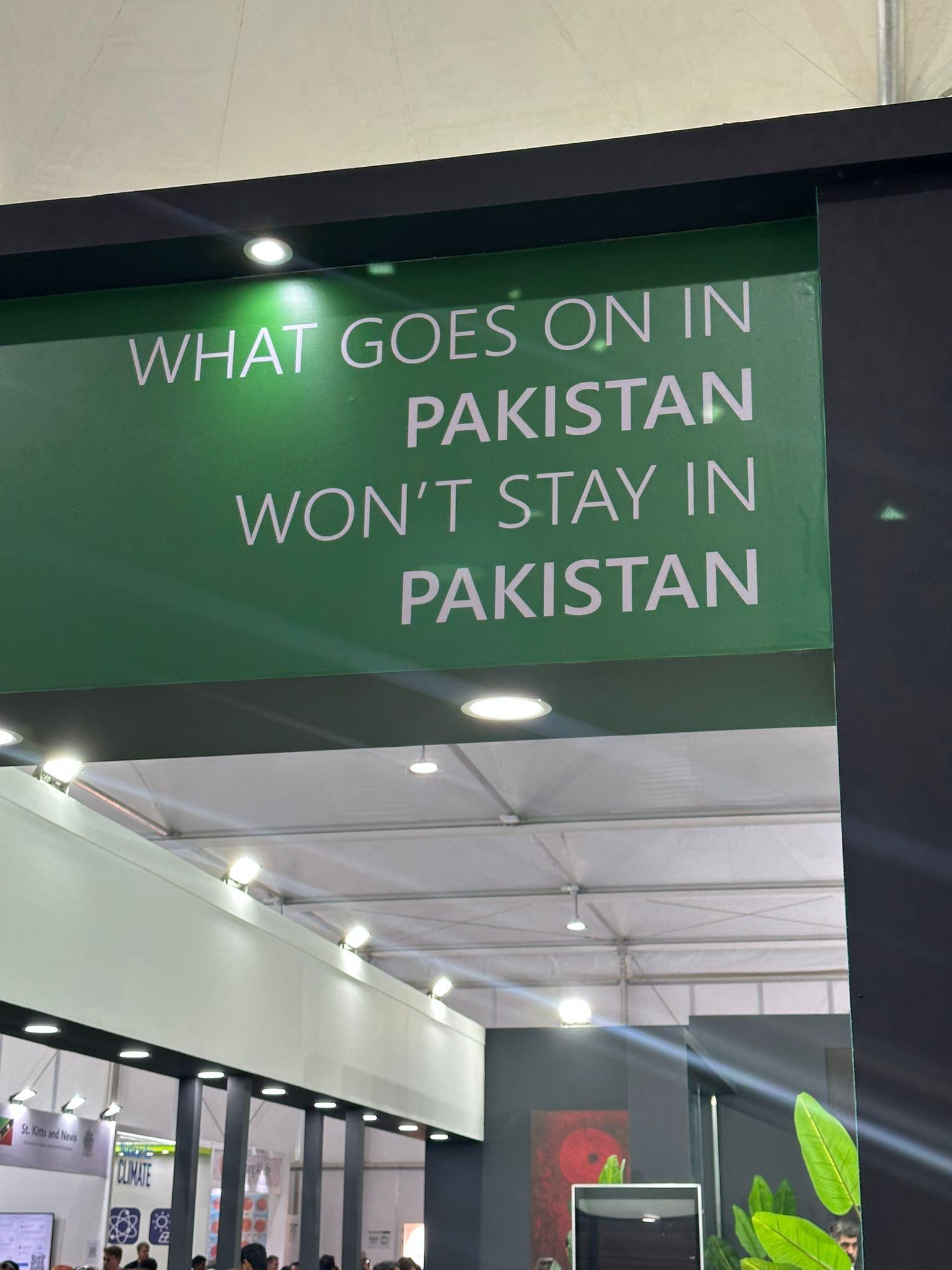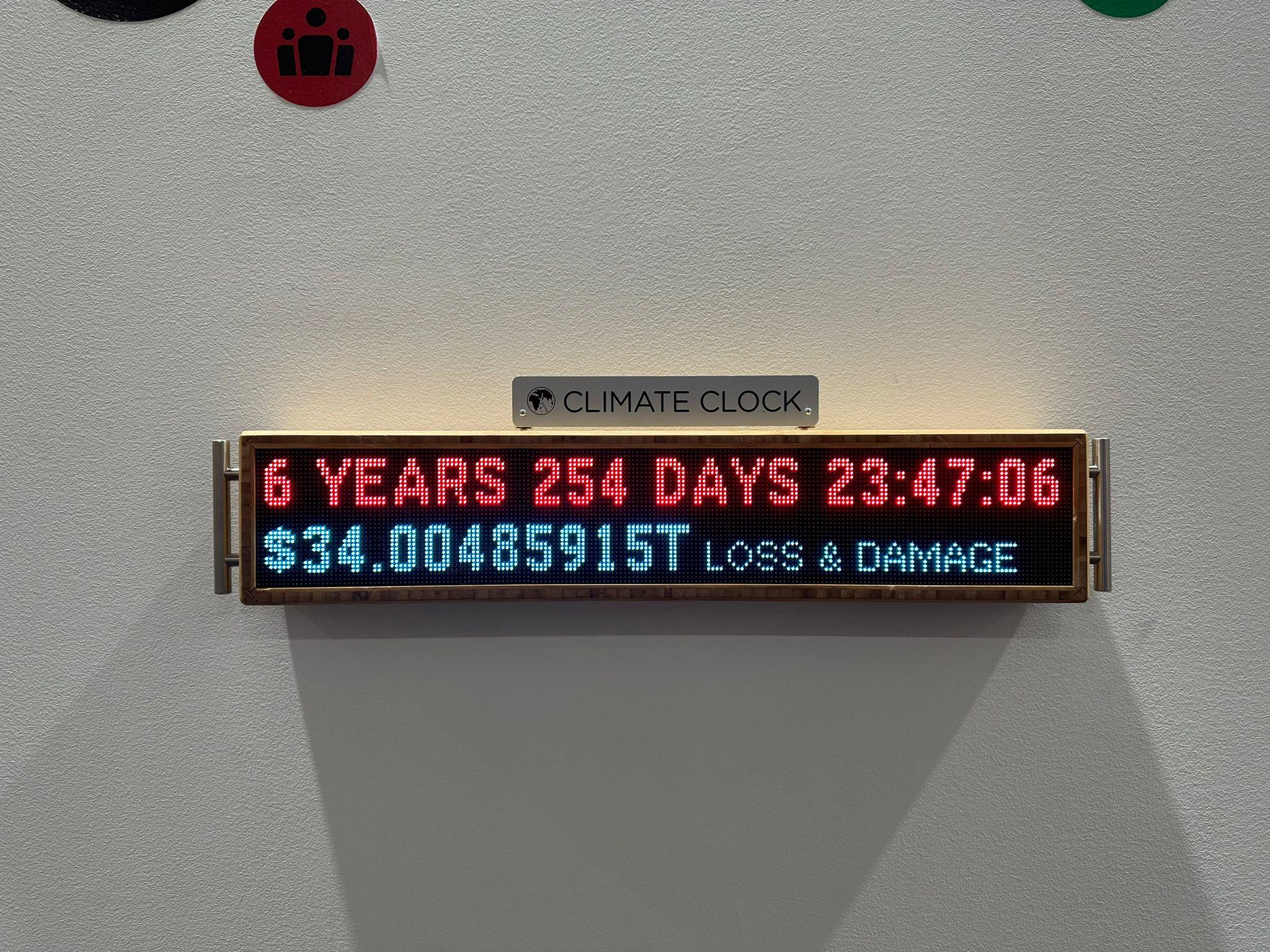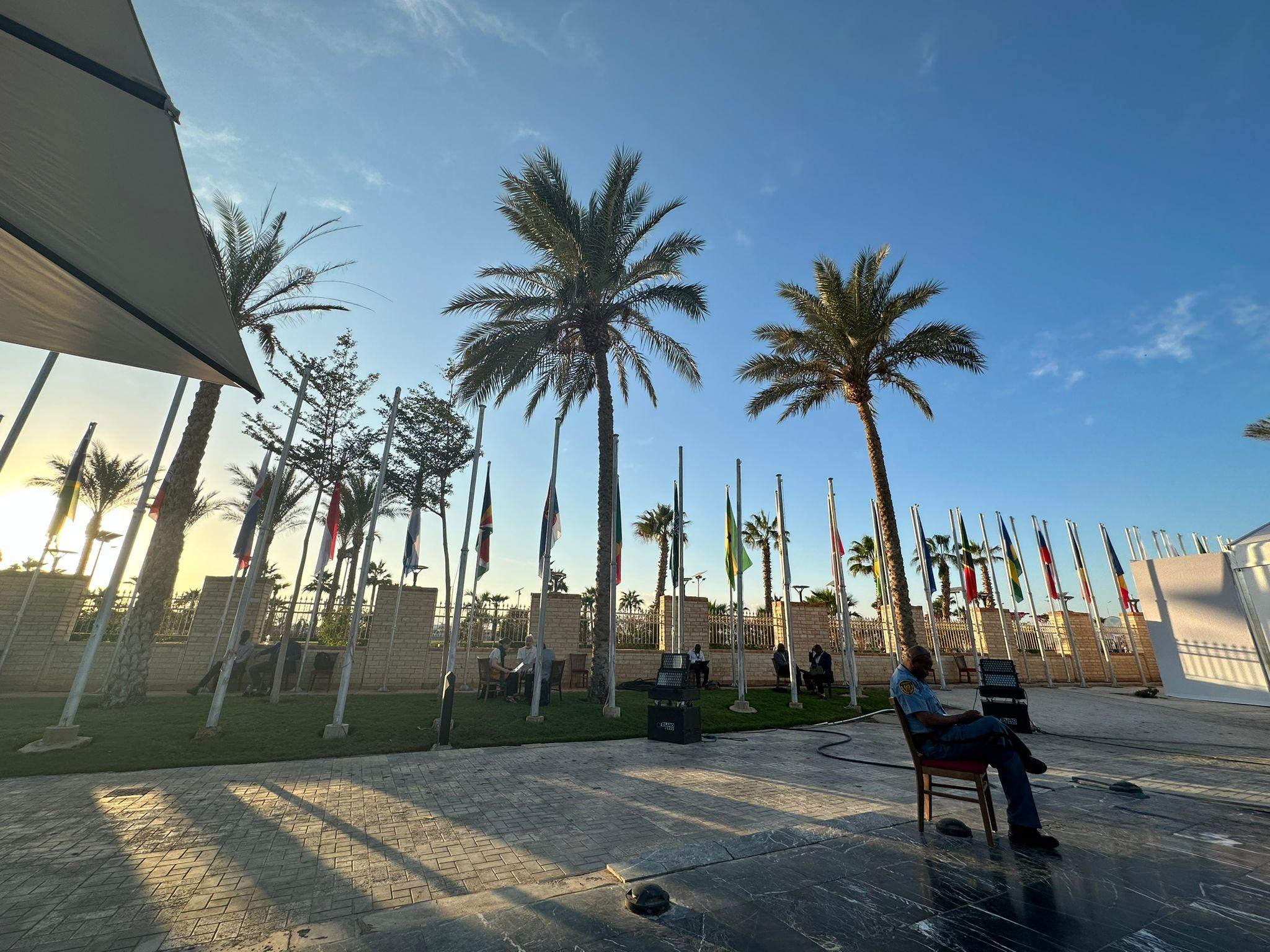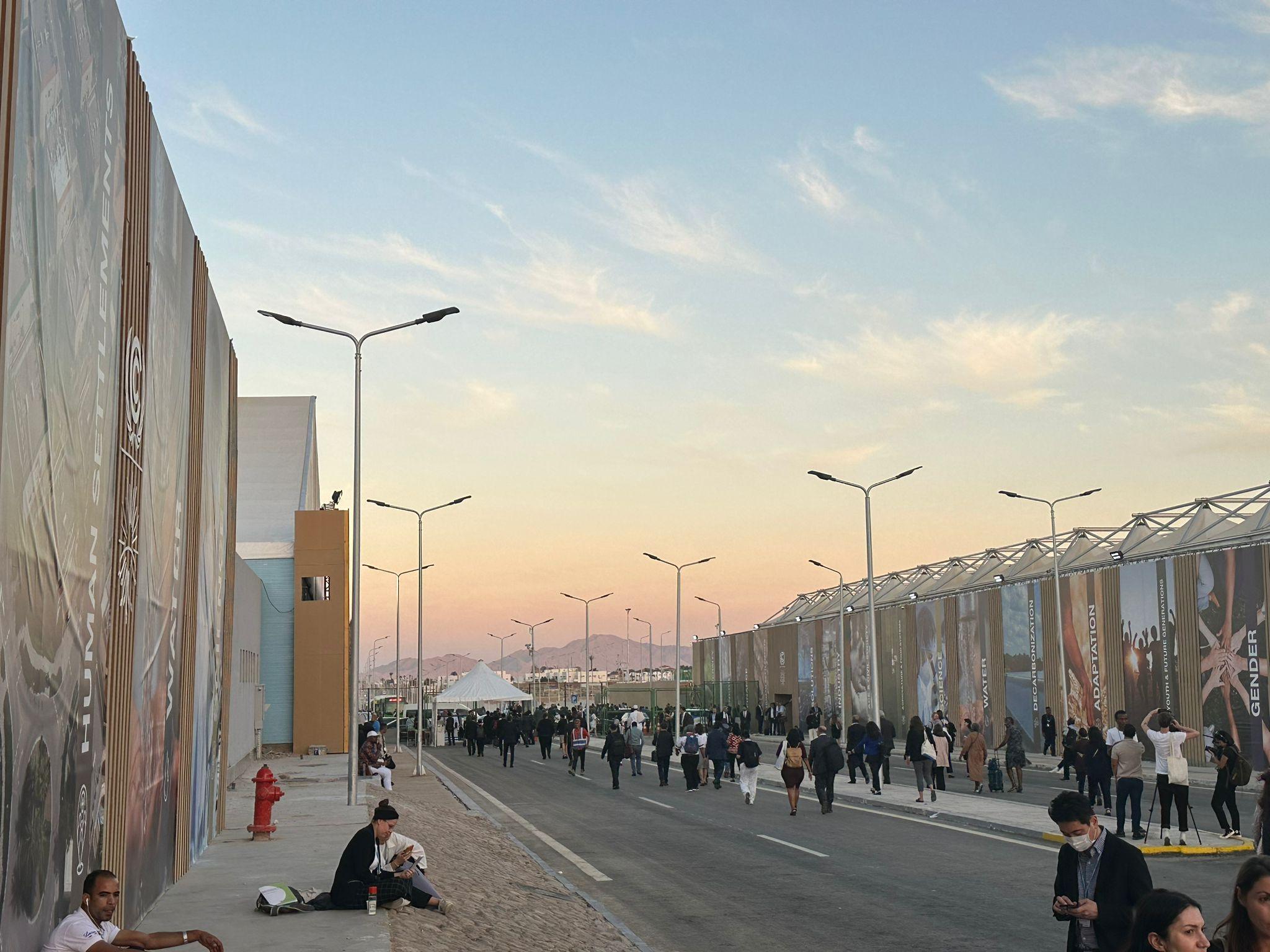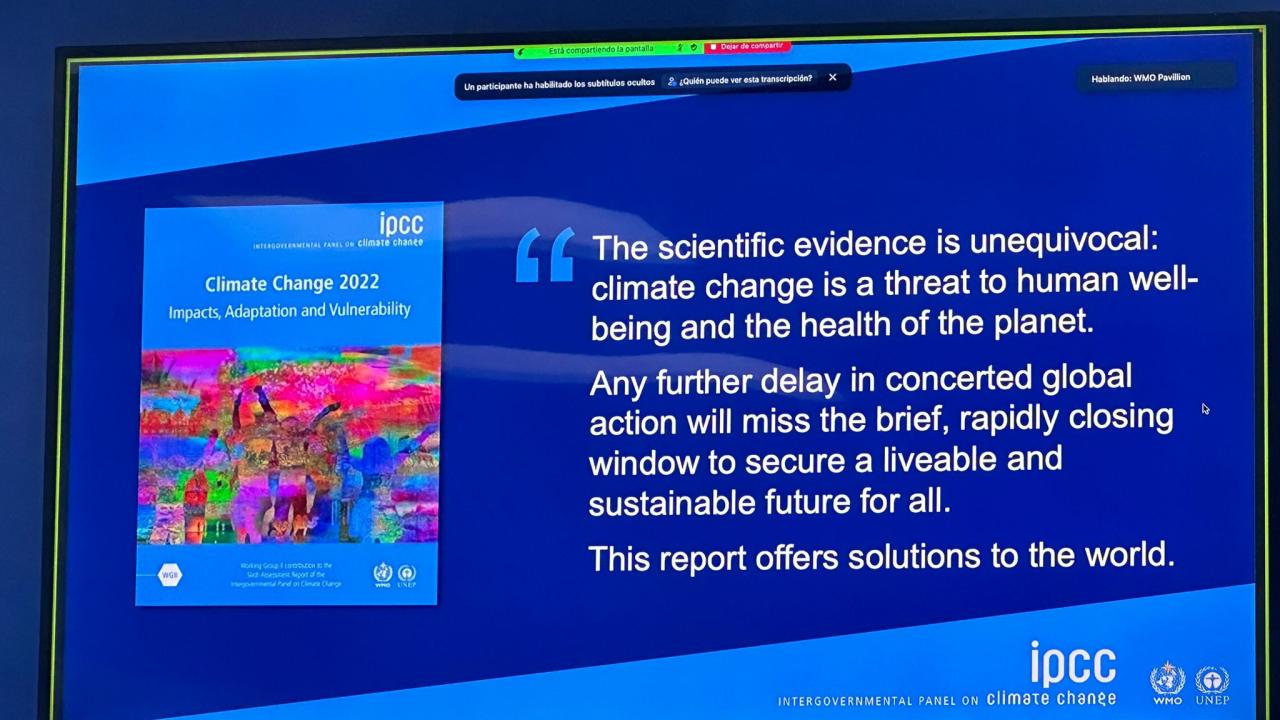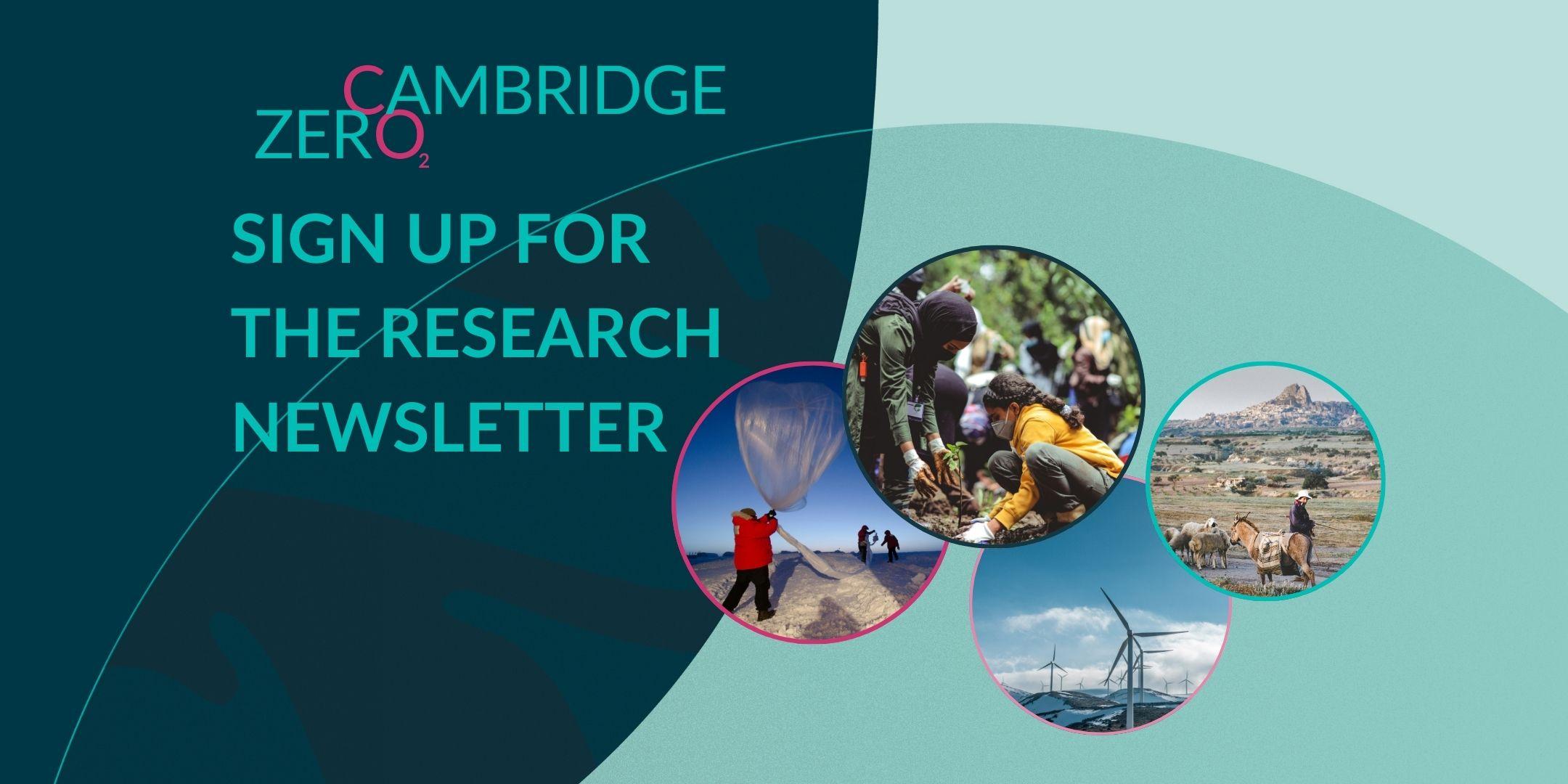As the first week of COP27 is slowly coming to an end (the conference will run through Saturday as well), I am back with some stories and impressions I collected from the Blue Zone, with a focus on Indigenous and regional events.
On Thursday, I visited the Indigenous Peoples Pavilion and listened in on a panel that discussed the role of Indigenous voices at COP27. It particularly emphasized the importance of traditional languages, the need to draw on intergenerational knowledge that is based on ancestral land as well as the need for free, prior and informed consent in relation to developments and actions on Indigenous territories. The panel highlighted how Indigenous Peoples continue to safeguard their land for the benefit of all. This was followed by affirmative applause from the audience. When a young woman from the audience, who seemed to have very little hope in the COP process, asked during Q&A why the panelists had made the effort to attend COP27, the answer was definite: Indigenous Peoples need to take up and claim space at COPs so that decisions will not be made without them. It was later added that the Indigenous Peoples Pavilion was also a result of this partaking and presents an important opportunity for Indigenous Peoples from around the world to come together, share experiences and unite.
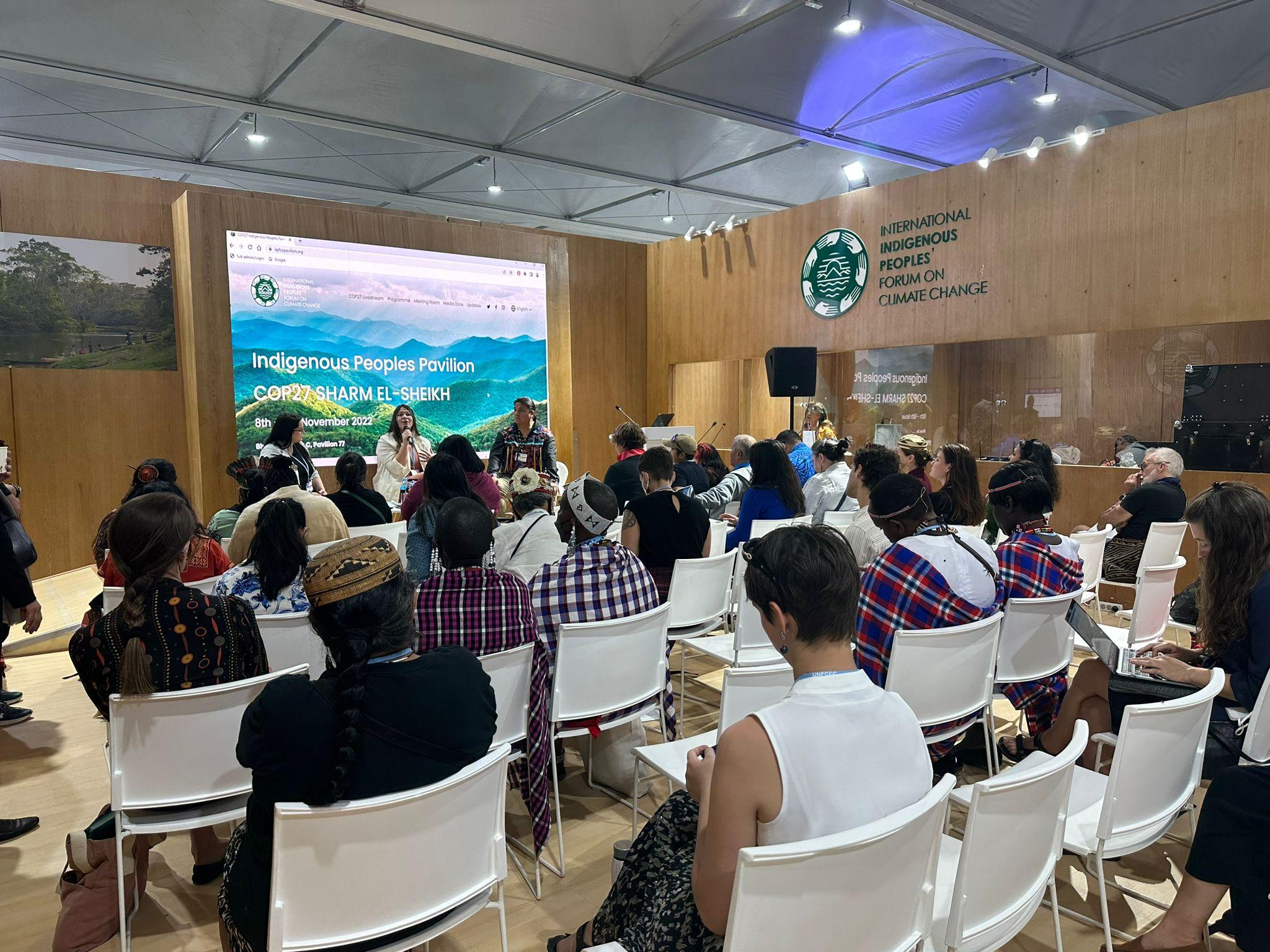
Later that day, I attended the Moana Blue Pavilion where the delegation of the Republic of the Marshall Islands presented their National Adaptation Plan (NAP). They also call their NAP 'The Survival Plan', which unfortunately describes the national circumstances of the Marshall Islands pretty accurately. From the presentation of the loss and damage that the small island state is already experiencing and will have to endure in the future, it quickly became clear the only way forward is adequate financial support and adaptation planning. The Marshall Islands will face tremendous costs (up to 1 bn US dollars in adaptation costs per island) and tough decisions, as it may ultimately come down to deciding which islands to save and which to surrender to rising sea levels. This, again, makes very clear the existential dimensions of the concept of loss and damage. For Small Island Developing States (SIDS) like the Marshall Islands, progress on loss and damage (finance in particular) is a matter of survival. One of the panelists, Kathy Jetñil-Kijner, a Marshall Islander poet, performance artist, educator and climate envoy for her country, highlighted the sense of urgency in her metaphor of adaptation action. She said adaptation is like “we are building a boat while it is sinking.”
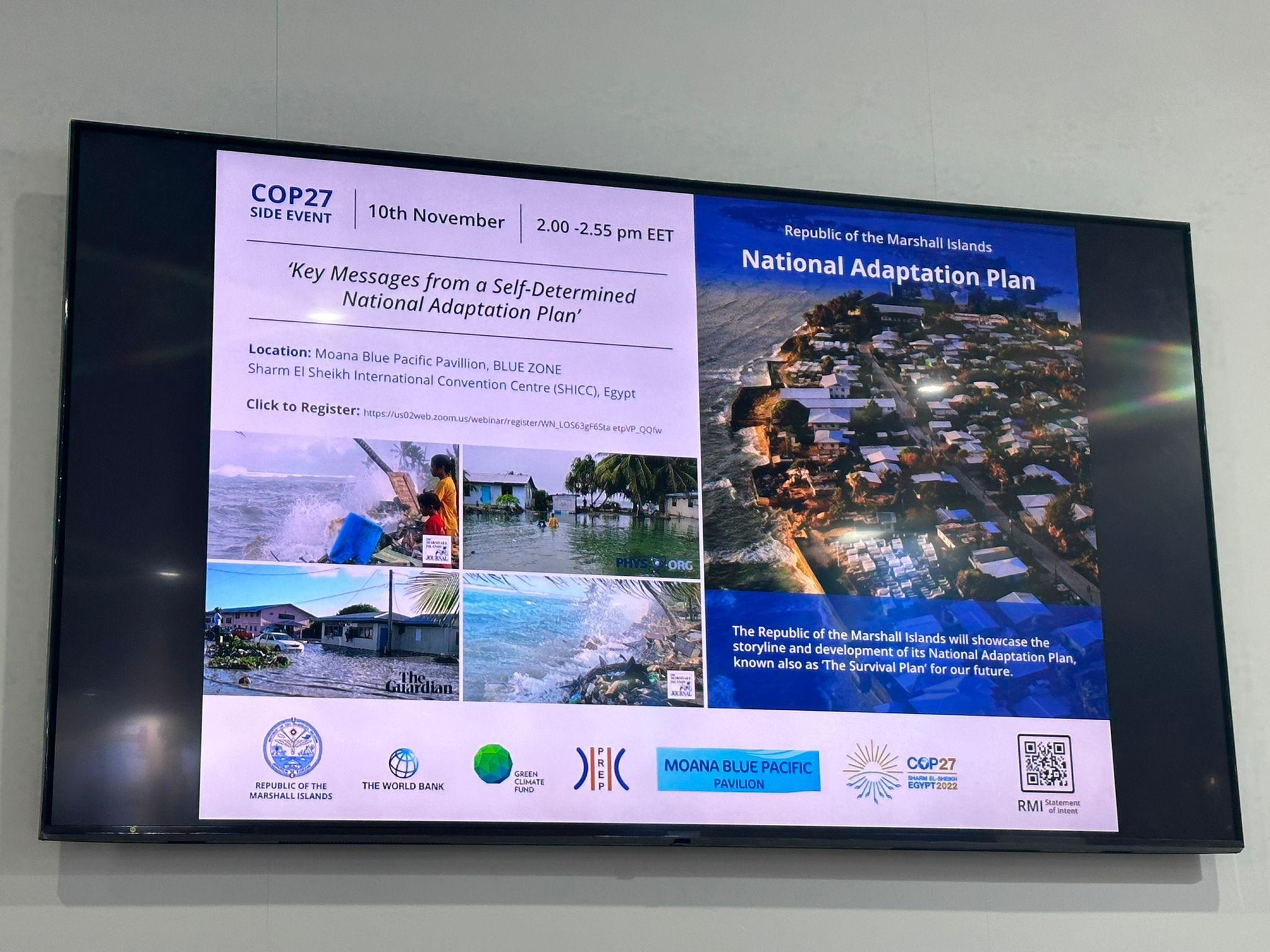
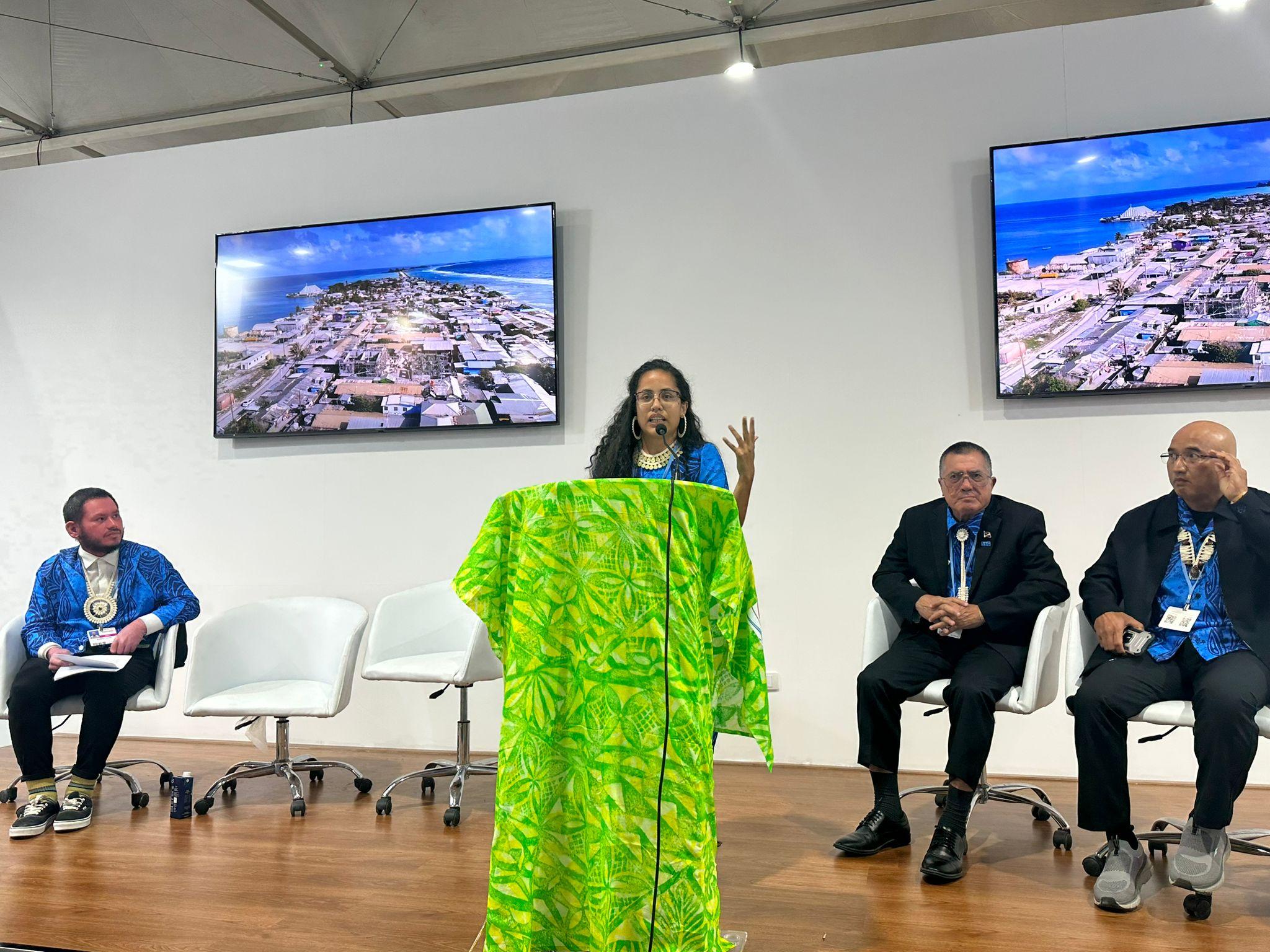
During his address at the event, Natural Resources Minister of the Marshall Islands, John Silk, shared a personal experience of how climate change is affecting life in the Marshall Islands. He explained how as a child, the sound of the waves of the ocean nearby was like a lullaby singing him to sleep at night. Now, to many islanders, it feels more like a threat. The event ended on a very emotional note with a song sung by a young Marshallese artist - a song about gratitude and how we all meet again someday, sometime.
After the event, I took the opportunity to thank Kathy for her immensely beautiful and moving poetry. Her work is an important and powerful reminder of what is at stake in the context of loss and damage policy and governance, and has been formative for my understanding of what loss and damage from climate change actually means for the most vulnerable people on the ground. I would like to use this space to share some work: In 2014, Kathy spoke to world leaders at the Climate Summit Opening Ceremony at the United Nations in New York. In 2018, she went on a 'poetic expedition' together with Aka Niviâna, an Inuk writer, to connect the story of the Marshall Islands with that of the island of Greenland.
If you want to learn more about Kathy Jetñil-Kijner’s work, please check out her website.
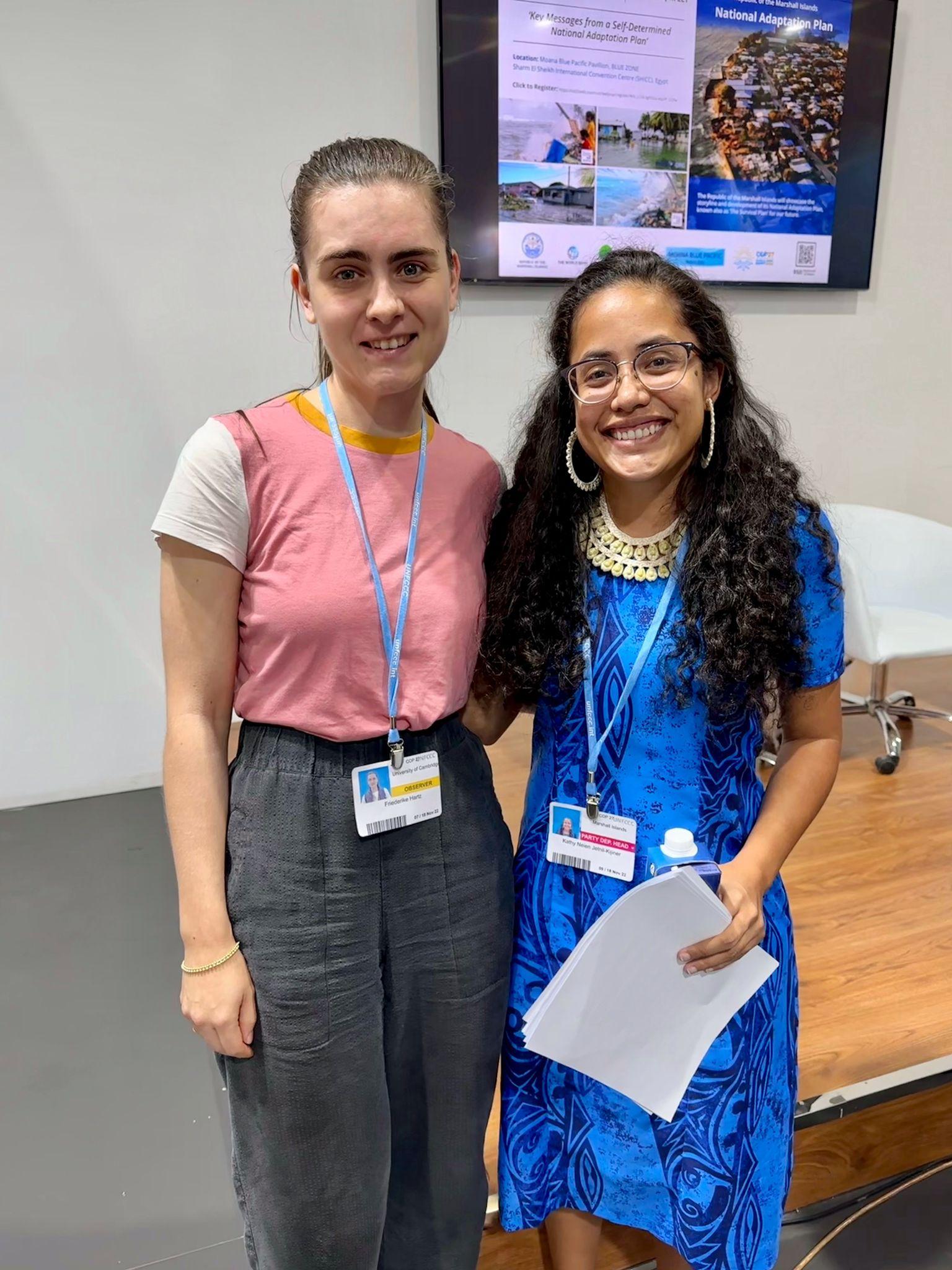
On Friday, I followed several events at the Science for Climate Action pavilion, inter alia, on 'Latin America and the Caribbean at the crossroads of climate change and sustainable development' organised by the MERI foundation which involved several IPCC scientists, policymakers and stakeholders from the region. One key challenge emphasised by IPCC Coordinating Lead Author Edwin Castellanos (of the AR6 WGII Central and South America Chapter) is the limited amount of evidence available for particularly vulnerable regions like Central America. This means that the assessment on the observed and expected impacts for the region in the Sixth Assessment Report (AR6) was limited and confidence levels remained low in many aspects (because the IPCC does not conduct its own research but assesses literature that is available until a certain cut-off date for each report) (see IPCC WGII AR6 Chapter 12, pp.1724-25). IPCC Lead Author Debora Ley (from Chapter 18 on climate-resilient development pathways) also highlighted that we need to avoid maladaptation which most affects the already most vulnerable groups. Her presentation ended with a clear message that has been reiterated a couple of times this week by IPCC authors: “The scientific evidence is unequivocal…Any further delay in concerted global action will miss the brief, rapidly closing window to secure a livable and sustainable future for all.”
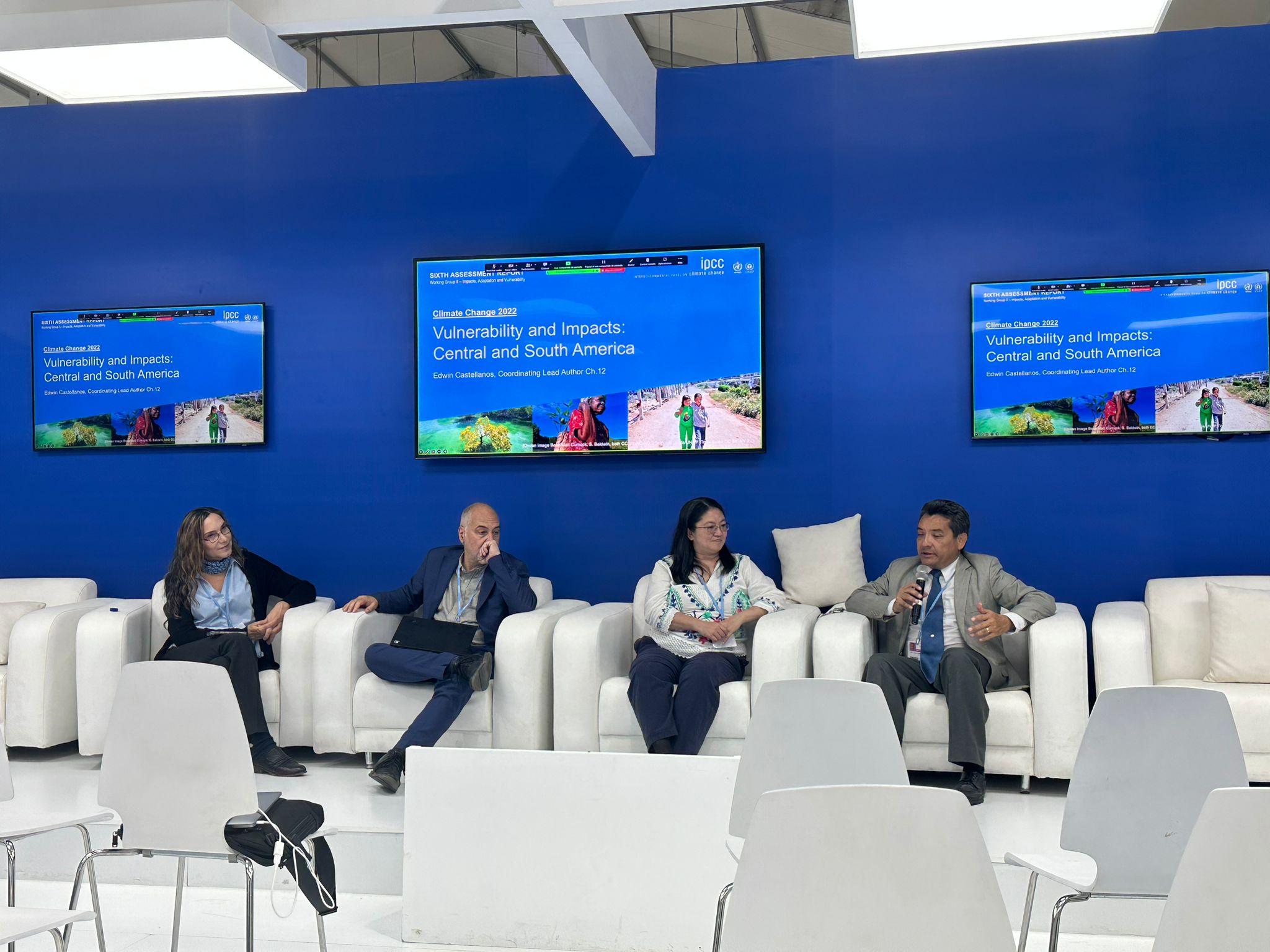
Finally, I want to share some more impressions below from the venue as I explore more of it, including some powerful messaging at the Pakistan pavilion and the climate clock at COP27.
I will be back tomorrow with a summary of Week 1 of COP27 and an update on the negotiations.
